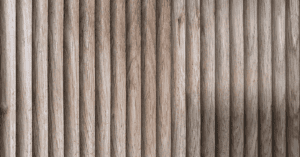Teak is durable and resistant to various conditions. However, it requires ongoing maintenance to preserve its good looks. The question is: should you use teak oil or sealer? What is the difference?
For me, it is essential to protect and keep teak beautiful for years to come. One of the best ways to do that is to apply teak products.
But with so many types of cleaners, oils, and sealers on the market, it can be difficult to know which to use.
Using teak oil vs teak sealer is a hotly debated topic. Both are popular teak care products that prolong the lifespan of your teak furniture.
I will explain their unique features and properties below. I will also include their pros and cons to make the comparison easier.
A Brief Introduction to Teak Wood
Before diving into the teak sealer vs. teak oil debate, I would first like to discuss the properties of teak wood. These can help you understand the need for regular maintenance and teak products.
Teak derives from a deciduous tree of the same name. These teak trees stem from tropical plantations in South Asia and Central America. They can grow to around 150 feet tall and survive up to 100 years. However, mature teak trees are prized for the heartwood in their trunks.
Teak wood has a distinct honey or golden brown shade. Hence, it introduces a classic look to any living area. It is also versatile enough to fit your existing decor.
Besides its beauty, teak tree wood is popular for its remarkable strength. It contains natural oils that resist moisture, UV rays, and weathering.
Meanwhile, its hardness rating on the Janka scale can vary from 1,155 to 3,000 lbf (pound-force). Therefore, it can withstand most cracks, elements, and harsh outdoor use.
Despite the wood’s natural oils, new teak furniture is still vulnerable to wear and tear. Its deep brown color can fade to a silvery gray patina when not regularly maintained. And over time, it loses its natural teak wood oils, leaving the wood defenseless against various weather conditions.
Thus, it is essential to take care of teak wooden furniture. It can help slow down the natural weathering process of the wood. It also maintains the teak’s original finish.
How To Maintain Your Teak Furniture?
By now, you already know why you need to take care of teak wood. But you may still wonder: how to maintain teak furniture?
Well, there are several ways to do this.
However, the most basic maintenance that teak requires is deep cleaning.
Regularly wash the surface with mild soap and water to maintain its natural beauty. You can grab a brush or a lint-free cloth to help scrub away the debris. Then, leave the wood to dry for several hours before using them.
Ideally, after cleaning, you want to protect teak wood furniture from further damage. That is where teak oils and teak sealers come into the picture.
These teak care products can add a protective layer to the wood grain. At the same time, they can restore the teak’s golden brown shade. They ultimately prolong the wood’s lifespan, so you can enjoy its benefits for a long time.
Let us take a closer look at them below!
What Is Teak Oil?
Teak oil is different from teak wood oil. The former does not come from teak trees, while the latter occurs naturally in every hardwood.
So, you may be curious why teak oil is called so.
Well, teak oil still contains natural teak wood oil, albeit in tiny amounts. Instead, it mostly uses tung oil and linseed oil. It also adds chemical solvents and varnishes to the mixture.
Teak oil deeply penetrates your wood surface. This way, it can protect the wood furniture from alcohol and moisture owing to its tung and linseed ingredients. It can withstand daily use as long as it is not constantly exposed to the sun.
Furthermore, the best teak oil has an excellent restorative ability. It can return the wood’s original golden brown color and fine grain pattern.
Overall, it is suitable for different purposes in and outside your home. Here are the best teak oils for protecting your furniture.
Pros of Teak Oil
There are several benefits to using teak oil vs. teak sealer. These include the following:
- It can restore the natural appearance and texture of teak wood
- A water-resistant oil to prevent twisting and warping
- It produces a subtle sheen on the wood surface
- It provides added protection against different outdoor elements
- Easy to apply
Cons of Teak Oil
Despite the benefits listed above, teak oil has several disadvantages to take note of. It is essential to learn these drawbacks to know if this teak care product is right for you.
Below are the cons of teak oil.
- It can be unstable and quickly breaks down under direct sunlight, which requires one to reapply it regularly
- It has low protective abilities compared to teak sealers
- Possible toxic finish due to its mixture of ingredients
- Teak oil tends to make a mess while applying
What Is Teak Sealer?
Teak sealer is a solvent-based teak care product. It contains chemicals, UV inhibitors, and pigments.
Teak sealers do not penetrate the wood like teak oils. Instead, they work by sealing or locking up the natural oils inside the hardwood, hence their name.
As such, a good teak sealer can prevent debris, moisture, and other contaminants from leaking into the furniture. It can also protect the surface from damaging sun rays. Thus, it is ideal for outdoor furniture and boat decking applications.
Overall, a teak sealer focuses more on protection from harsh weather conditions and elements. It is not as effective as teak oils in preserving the original look of outdoor teak furniture. However, teak sealers can still restore the natural luster of the tropical hardwood.
These are the best teak sealers for your project.
Pros of Teak Sealer
Teak sealers have unique properties that are suitable for certain situations. Below are the advantages of using the best teak sealer vs. teak oil.
- It seals in existing oils to take advantage of teak wood’s natural protective properties
- It offers better protection from the elements, including harmful UV rays
- Most teak sealers are low maintenance and, compared to teak oil, they last longer
- A subtle shiny finish on the wood surface
- It provides many applications both indoors and outdoors
Cons of Teak Sealer
While teak sealers can be more durable than wood oils, they still have a few downsides.
Consider the following cons before finalizing your purchasing decision.
- It cannot fully restore weathered teak furniture to its original beauty
- It requires prepping the surface by removing previous finishes before applying the fresh sealer
Frequently Asked Questions
How to apply teak sealer?
By now, you probably already know that teak sealer is among the best teak care products today. But if you want to take advantage of its full benefits, it is essential to know how to apply teak sealer.
Refer to the following application steps.
First, choose and prep your working area. It is best to apply teak sealer outside where there is little to no risk of staining wooden furniture. You can also use old clothes or newspapers to prevent accidental product spillages.
Next, clean the wood surface. Mix mild dishwashing liquid or soap with water. Then, apply this cleaning solution to your outdoor teak furniture with a rag or brush.
Once the surface is clean, proceed to strip the existing finishes. Use fine-grit sandpaper to remove any teak stain or oil on the wood’s top layer. Continue sanding until the surface is smooth and even.
After removing the existing wood finish, it is time to apply the wood sealer. Grab a foam brush and dip it into the teak care product. Then, put on the teak sealer using short, even brush strokes for a uniform look. Continue applying teak sealer until you cover the entire teak furniture.
Once you do, leave the outdoor furniture to dry completely for several hours.
Finally, apply the second thin coat of teak sealer to ensure an even finish. After this layer is completely dry, you can use your teak wood furniture as intended.
How long does the teak sealer last?
Unlike teak oil, a teak sealer remains stable when it is exposed to moisture, UV light, and wind. It does not quickly fade or get washed off with water. Therefore, a teak sealant can last you for a year or two. Just ensure to apply the product properly so that it adheres to teak surfaces. You can follow the steps above if you are unsure how to apply teak sealant.
Can I apply a teak sealer over teak oil?
Yes, you can put on teak sealer over oiled teak furniture pieces. However, after applying teak oil, leave the lubricant to dry and settle for around two weeks. Doing so allows the teak oil to penetrate the wood grain. Choose a well-ventilated and sunny location in your house to speed up the drying process.
If you immediately rub in the sealant after you apply teak oil, you may find its protective qualities less effective. Thus, waiting before applying a teak sealer over the oil is best.
Conclusion
Both products can help maintain your outdoor furniture. However, teak oil focuses on restoring the appearance of natural wood. On the other hand, a teak sealer has excellent protective abilities. Which will you use?
Did you find this article helpful? Let us know!






